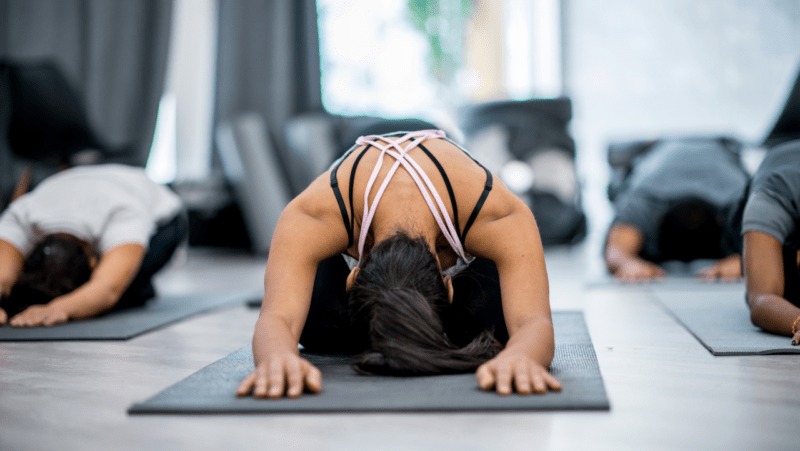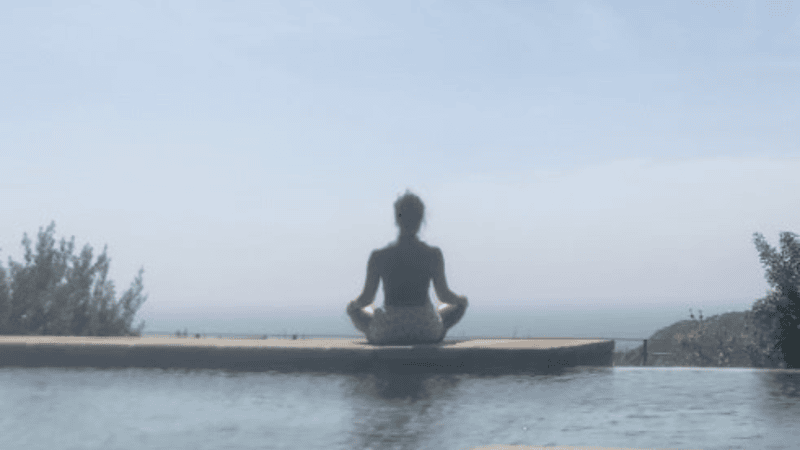
All Vibes Welcome
A more inclusive approach to 'good vibes only' in yoga - By Megan Biondi
Reading time: 5 minutes
The “good vibes only” mantra in Western yoga may have begun as a well-intended way to describe a yoga studio’s responsibility to its students—sending them “positive vibes” or giving them caring treatment regardless of their background or situation (Bernier, 2018). It is important, however, that we as yoga teachers and yoga studios do not place this same expectation for positive vibes only onto our yoga attendees, or limit our space to those who can bring in an energy that makes us feel good.
“Good vibes only” is a perfectly well-intentioned way to describe the expectation of a studio or teacher’s attitude toward yoga students, but to flip this expectation onto students who enter the space to take classes causes the sentiment to become a toxic and exclusionary spiritual bypass.
Many yoga studios in the Western world tout their space as judgement-free or even trauma-informed. However, a large percentage of the very studios that present themselves in this way are actually elitist and exclusionary, feeling more like wellness-as-gentrification than judgement-free and trauma-informed spaces to practitioners.
Many times, the studios that tout these labels still only cater to a small, upper-class, homogenous group of attendees, making the space feel unwelcoming to anyone outside of these narrow and privileged demographics. The most tragic effect of this trend is the impact on the psyche of the yoga practitioner or studio attendee when the “no-judgement zone” feels judgmental and the “trauma-informed” space becomes re-traumatising for those who enter.
A distorted interpretation of the “good vibes only” mantra within a yogic space can easily cancel out any judgement-free or trauma-informed aspects of the space and the practice by not allowing room for members of the studio to hold space for the full range of "vibes" practitioners bring in and even by cringing at anyone who may present varying types of diversity that make the dominant population uncomfortable, such as lower socioeconomic status, neurodivergence, mental health struggles, trauma histories, disabilities, or even “negative” attitudes or emotions.
This type of stance on the part of a yoga studio perpetuates trauma and exclusion for diverse practitioners—and sometimes even teachers—who likely came to yoga looking for a safe space. For this reason, all yoga studio staff must be trained not only to unconditionally present a safe space and welcoming attitude toward those they serve, but at the same time to be comfortable with practitioners bringing in “vibes”, attitudes, emotions, and varying kinds of diversity that may make them uncomfortable—since they are the ones in the position of service.
Matthews (2020), opts for a "real vibes only" approach, stating that “well-meaning messages [such as ‘good vibes only’] often do precious little to lift our mood. In fact, they can even make it worse. Granted, looking on the bright side can pay dividends in terms of well-being, but it is by no means a panacea, especially when it guilts those not able to achieve it, through no fault of their own.”
In fact, making space for all “vibes” does not equate to avoiding the responsibility that we as yoga teachers and studios have of helping yoga practitioners on a journey of improving their mood, attitude, or general vibration—if that is what they want—but is rather a key step to helping oneself and others on a journey toward self-improvement and trauma healing. According to Hanson (2020), universally, people's vibrations actually do improve when they are treated fairly and unbiasedly, and have their basic needs met.
Moreover, as Rogers (1995) points out, “the curious paradox is that when I accept myself just as I am, then I change.” The moment in which we accept ourselves and others as is, we create space for change and improvement. This is the type of approach we must take toward our yoga attendees, also acknowledging and accepting that there could be certain parts of themselves they may not want to change, and from a trauma-informed perspective, we cannot force any kind of positive vibe on them. We can only treat them with kindness and acceptance and allow them to improve their “vibration” on their own terms, if that is their goal.
Chiariello (2023) affirms that “you do not need to know that someone has experienced trauma to create a safe [and welcoming] space for everyone.” Thus, all yoga studios, but especially those that tout themselves as trauma-informed and judgement-free, must begin by transforming any elitist, wellness-as-gentrification, “good vibes only” interpretation of yoga into an “all vibes welcome” approach, ensuring that every member of their staff—especially whomever students will first see and interact with upon entering the studio—is trained in a way that equips them to welcome and hold space for all vibes and all people without exception.
References
Bernier, J. (2018). Positive vibes only: Inside the energetics of teaching yoga. BeYogi. https://beyogi.com/inside-the-energetics-of-teaching-yoga/
Chiariello, C. (2023, 22 October). Trauma informed yoga workshop part I. [Conference session].
Hanson, R. (2020). Resilient. Harmony Books.
Matthews, C. (2020). Real vibes only: Well-meaning positivity platitudes do precious little to lift our mood right now. https://www.health-magazine.co.uk/amp/real-vibes-only-well-meaning-positivity-platitudes-do-precious-little-to-lift-our-mood-right-now
Rogers, C. (1995). On becoming a person. Houghton Mifflin.







